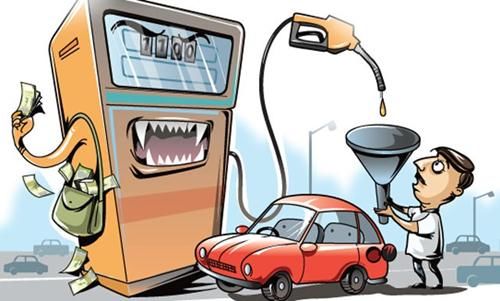Zimbabwe Energy Regulatory Authority (ZERA) advised that as of Monday the 22nd of 2019 fuel prices have been reviewed upwards again. Maximum pump price for diesel is now ZWL7.19 per litre (up from ZWL5.84) whilst petrol is now ZWL7.47 per litre (up from ZWL6.10). This came as no surprise and I’m sure I’m preaching to the choir. I’ve said it several times that as a nation the prevailing conditions mean that we shall continue to experience a perpetual cycle of the same things. One of these things is fuel hikes and if the status quo is maintained more hikes are still on their way. Last night social media was abuzz with rumours of another hike this morning but ZERA stepped in to deny the rumours. We shall see how that unfolds. ZERA also highlighted that the exchange rate they used in coming up with the new prices is 7.5 – that shows us something that I’ll touch on later.
This fuel price hike is the 4th one so far this year which clearly shows a recurrent trend. Whilst ZERA didn’t enunciate the basis for the hike it seems apparent that the hikes are being premised on vying to align with the exchange rate on the interbank market. As you can see from the interbank exchange rate (7.5) at the time of the fuel price hikes you’ll notice that ZWL7.19 and ZWL7.47 (for diesel and petrol respectively) are falling short by some cents from the exchange rate. Now, considering how mercurial the interbank exchange rate is it’s no surprise that further fuel price hikes are looming.
Chasing The Interbank Exchange Rate
You’ll recall that earlier on this month (July 13th) fuel prices were hiked by roughly 16% – I’m referring to the hike that preceded this latest one. The finance minister, in justification of that hike, mentioned that it would make sense if the cost of fuel per litre is equivalent to 1 USD. So this clearly substantiates the fact that fuel price hikes are being triggered by changes in the interbank exchange rate. Essentially the objective is to chase or keep the fuel prices in close proximity or even at par with the prevailing interbank exchange rate.
Implications
As is commonplace nowadays electricity is scarce owing to long hours of load shedding. Most businesses have been locked in scenarios where daily one has to use a generator for as much as 18 hours a day. This is for cases of those who do have the generators. Regardless, operating costs have shot up due to that and also because the fuel has to be at times sourced from the black market. It’s even worsened by the fact that to get fuel on the black market forex is usually demanded as payment. Getting forex is also an expensive undertaking owing to its scarcity and exorbitant exchange rates often used. All these factors and more are culminating into untenable situations for businesses where their revenues are trailing or barely keeping up with the rising costs of doing business.
This then triggers price hikes of goods and services in a bid to keep businesses afloat. These further add weight to hyperinflation which in turn affects exchange rates and the cycle goes on and on like that. That’s why you notice that since the beginning of 2019 we have been witnessing a continuous cycle of exchange rate volatilities, fuel price hikes, prices hikes and hyperinflation. The plight of the people in view of all these aspects is getting worse by the day because incomes and salaries have relatively remained static.
Some experts say that the continued stance by the government to subsidize fuel importation is not the best approach. When you look at the parallel market exchange rates you’ll notice that Zimbabwe still has the cheapest fuel in the Southern African region. This doesn’t make any sense at all especially considering that fuel is quite scarce locally with long winding queues. The problem is that political decisions far-removed from economic principles are being adopted. A symbiotic relationship should exist between politics and economics because usually, economics suffers at the expense of politics.
If it weren’t for the ZUPCO buses public anger could have soared even higher but for the commuting public, there’s been some relief. Though again the issue of subsidization comes to the fore because when you look at the ZUPCO buses there’s excessive subsidization. The transport fares being charged and the operating costs aren’t in synch. It has also been reported that as much as fuel queues are prevalent, fuel consumption locally has been taking a dive. This implies that industrial activity and business productivity have been waning also. Resultantly you realize that the nation is busy managing problems rather than addressing them and unlocking the much needed industrial activity.








